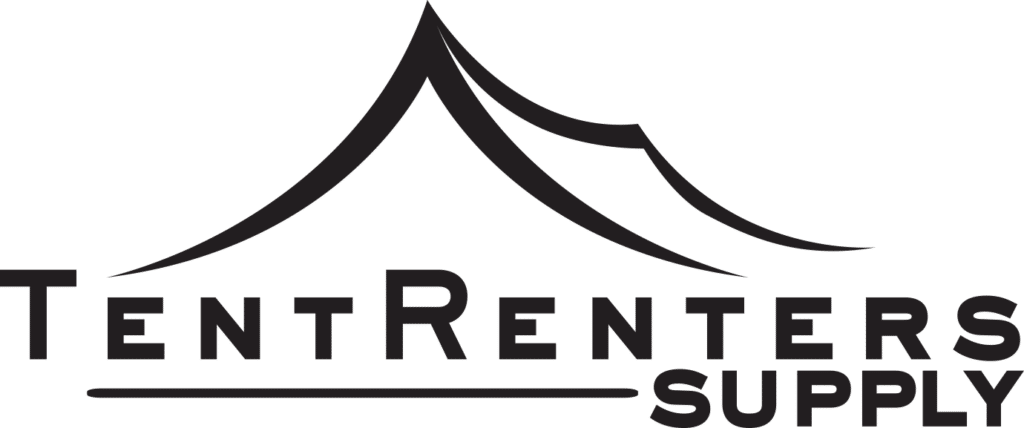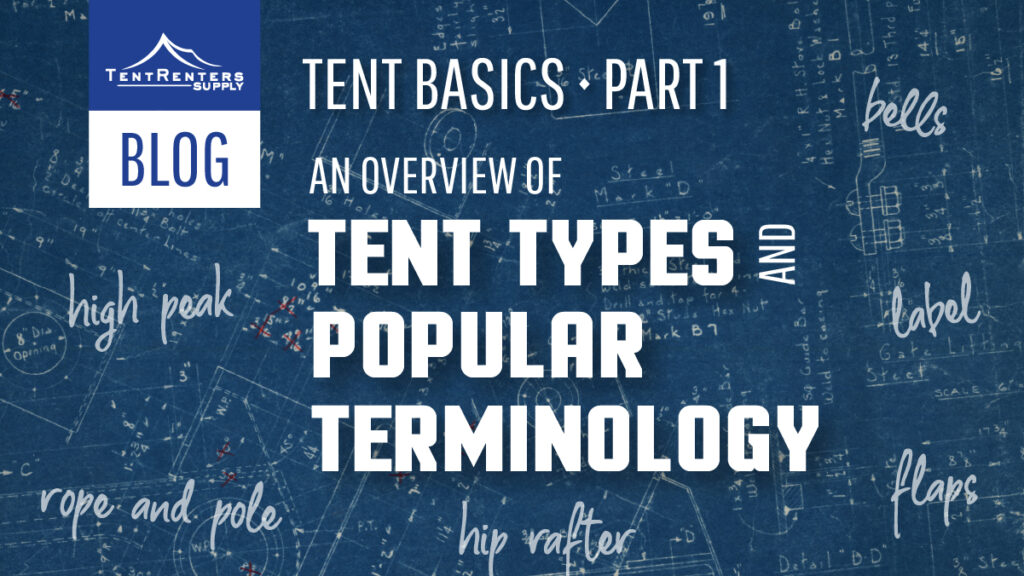Tent Basics
Part 1: An Overview of Tent Types and Popular Terminology
In our industry, no two tents are exactly the same.
Even if they’re made of the same material, size, weight, and have the same style—it’s ultimately based on the use case and purpose behind it.
Whether you’re a large-scale events planner, an industrial company, or in the hospitality industry, it’s vital to understand the basics of tents in order to make the smartest investment for your brand.
In this comprehensive four-part series, Tent Basics with Tent Renters’ Supply, you’ll learn about:
- Industry terminology and an overview of the different types of tents
- West coast frame, gable, and marquee tent styles
- High peak, role & pole, and structure tents
- Considerations for one piece vs. sectionals
As a top tent manufacturer, we cater to a wide array of industries, from fairs and cultural events to weddings, farming, construction, and disaster relief. We know how crucial it is to pick the perfect materials for each unique application.
An Overview of Different Tent Types
Tents come in all shapes and sizes, each catering to a specific need.
From West coast frame, gable, and marquee tent styles to high peak, rope & pole, and structure tents, you’ll explore the diverse options that cater to various occasions and environments. We’ll explore these in greater detail in our upcoming editions of our series.
But first, let’s dive into the industry terminology associated with creating your custom vinyl tent.
Tent Terminology 101:
If you’re serious about learning everything your tent investment involves, you’ll want to understand these key terms that make up the anatomy of a tent:
Bells: Bell-shaped cutouts along the edge of the valance, which can be tailored to additional shapes based on specific requests. These modifications serve both functional and aesthetic purposes, allowing for versatility in design and utility.
Buckle Band: A durable strip of reinforced vinyl equipped with sewing, nylon straps, and buckles. The buckle band plays a crucial role in securing the tent to the frame corners. The nylon straps and buckles create a robust fastening mechanism, ensuring the tent remains firmly attached to the frame.
Corners: Reinforced webbing loops that are sewn into the corners of the tent. These corners facilitate the process of pulling the tent over the frame, offering stability and support during setup. They serve as anchoring points, aiding in securing the tent to the frame structure.
Flaps: Vinyl flaps positioned at each corner of the tent, equipped with Velcro fasteners. These flaps not only enhance the tent’s visual appeal but also serve practical purposes. They connect the valance to the length of the tent, adding an element of wind resistance and preventing the valance from billowing in the wind.
Hip Rafter: A significant frame component that extends from the corner connector to the Crown. The hip rafter contributes to the overall stability and structural integrity of the tent, providing a foundational framework that supports the entire structure.
Hood: A reinforced strip of vinyl installed at the peak and center ridge of the tent. The hood serves to protect the tent top from excessive wear caused by friction, especially in areas where rubbing occurs frequently. Its presence ensures the tent remains durable and reliable over time.
Label: Sewn directly into the tent top, the label carries essential information such as the tent’s serial number and certification for flame resistance. In the case of sectional tents, each section and end will have its own label, making identification and documentation more precise.
Rafter: A component of the tent frame that runs perpendicular from a side spreader to a center ridge. Rafters contribute to the overall structural integrity of the tent, enhancing its stability and providing support to various components.
Rope Line: A rope that runs along the outside perimeter of the tent, positioned just above the valance. This rope line serves as a point of attachment for hanging sidewalls from the tent structure, adding versatility to the tent’s functionality.
Side Spreader: Also known as a perimeter spreader, the side spreader is a frame component that runs along the perimeter of the tent. It contributes to the tent’s overall stability and structure, ensuring even distribution of weight and tension.
Center Ridge Spreaders: Additional spreaders placed strategically along the center ridge of the tent. These spreaders play a crucial role in balancing the sections of the tent, maintaining uniformity in tension and structure throughout.
Valance: The lower section of the tent that hangs vertically down to the ground, typically measuring around 13 inches in length. This component adds stability to the tent and helps maintain its shape, especially during windy conditions.
Make an Informed Decision with Tent Renters Supply
Ready to make an informed choice that will elevate your organization’s presence and events?
Reach out to Tent Renters Supply today. Let’s embark on this collaborative journey together, where your ideas meet our expertise, resulting in a custom vinyl tent that’s as unique as your organization. Your success is our ultimate reward.
Choose Tent Renters Supply, where your vision becomes reality.

